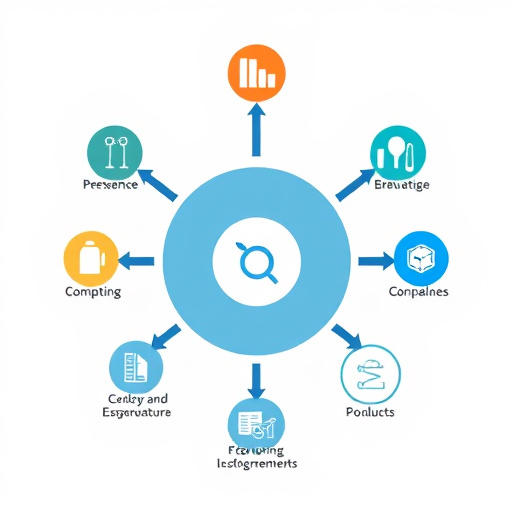The DMAIC framework (Define, Measure, Analyze, Improve, Control) is a data-driven quality management system that uses Six Sigma Key Metrics and Tools to identify and rectify process defects. By systematically enhancing efficiency, reducing variability, and improving customer satisfaction, cost reduction, and operational excellence, this methodology offers an iterative approach to achieving organizational excellence across various sectors like manufacturing and healthcare.
“Discover the power of DMAIC, the cornerstone framework behind the renowned Six Sigma methodology. This structured approach revolutionizes processes and drives exceptional quality. In this comprehensive guide, we demystify DMAIC, breaking it down into its five phases: Define, Measure, Analyze, Improve, and Control. We’ll explore vital key metrics and tools tailored for each phase, offering practical insights from real-world applications. Elevate your understanding of Six Sigma metrics and tools, empowering you to lead effective process improvements.”
- Understanding DMAIC: The Six Sigma Methodology
- Defining the Five Phases of DMAIC
- Key Metrics and Indicators for Measuring Success
- Essential Tools for Each Phase of DMAIC
- Real-World Applications: Why Six Sigma Matters
Understanding DMAIC: The Six Sigma Methodology

DMAIC, or Define, Measure, Analyze, Improve, Control, is the core framework behind Six Sigma, a data-driven quality management methodology. It provides a structured approach to identifying and eliminating defects in processes, ultimately improving efficiency and reducing variability. By focusing on these five distinct yet interconnected stages, organizations can achieve remarkable results in terms of increased customer satisfaction, reduced costs, and enhanced operational excellence.
In the Define phase, the problem is clearly identified, along with its impact on key Six Sigma metrics and business objectives. Measure involves gathering data to quantify the current state of affairs, while Analyze delves into the root causes behind defects using advanced statistical tools. Improve focuses on implementing solutions and testing their effectiveness, followed by Control, where established processes are monitored to ensure sustained improvements and prevent regressions. Key Metrics and Tools play a pivotal role throughout DMAIC, enabling professionals to make data-backed decisions and track progress effectively.
Defining the Five Phases of DMAIC

The DMAIC process, a cornerstone of Six Sigma methodology, is an iterative framework designed to improve processes and reduce defects. It comprises five distinct yet interconnected phases: Define, Measure, Analyze, Improve, and Control (DMAIC). During the Define phase, teams clearly identify the business problem or opportunity, setting project goals and establishing key performance indicators (KPIs) using Six Sigma Key Metrics. This step involves understanding customer requirements and defining the scope of the project.
The Measure phase focuses on gathering data to establish a baseline performance level. Advanced Six Sigma tools like statistical process control (SPC) charts and data collection methods are employed to measure current process performance, pinpointing sources of variation, and identifying key drivers of defects. This data-driven approach ensures that subsequent analyses are grounded in factual evidence.
Key Metrics and Indicators for Measuring Success

In the pursuit of excellence, Six Sigma relies on a robust framework of key metrics and indicators to measure success. These tools are essential for tracking performance, identifying variances, and driving continuous improvement. By employing Six Sigma Key Metrics and Tools, organizations can gain profound insights into their processes, products, or services. For instance, defect rates, cycle times, customer satisfaction scores, and process capability indices are commonly used metrics that provide a comprehensive view of operational efficiency.
The effectiveness of these Six Sigma Key Metrics lies in their ability to transform raw data into actionable information. They help in setting measurable goals, monitoring progress, and making data-driven decisions. Moreover, these indicators facilitate the identification of bottlenecks, root causes of defects, and areas for process optimization. As a result, organizations can enhance quality, reduce costs, and ultimately deliver superior customer experiences.
Essential Tools for Each Phase of DMAIC

The DMAIC process, a cornerstone of Six Sigma methodology, relies on a robust set of tools to navigate each phase effectively. During the Define stage, key metrics and tools like value stream mapping (VSM) and Fishbone diagrams are indispensable for identifying processes, understanding customer requirements, and pinpointing sources of variation. These visual aids help teams focus on the root causes of defects, setting a clear direction for improvement.
In the Measure phase, statistical analysis becomes crucial with tools such as control charts and hypothesis testing. These metrics enable data-driven decision-making by tracking process performance, isolating special causes, and validating improvements. By quantifying key Six Sigma Key Metrics, organizations can objectively assess progress and make informed adjustments to their processes, ultimately leading to significant efficiency gains and enhanced quality.
Real-World Applications: Why Six Sigma Matters

Six Sigma isn’t just theoretical; it’s a powerful tool with real-world applications that have transformed businesses across various sectors. By focusing on process improvement and defect reduction, Six Sigma helps organizations enhance efficiency, increase customer satisfaction, and ultimately drive profitability. For instance, manufacturing companies use Six Sigma to streamline production lines, minimize waste, and improve product quality, leading to significant cost savings. In healthcare, it’s employed to enhance patient safety, reduce medical errors, and optimize care delivery processes.
The effectiveness of Six Sigma lies in its ability to leverage key metrics and tools like DMADIC (Define, Measure, Analyze, Improve, Control) framework, statistical analysis, and process mapping. These tools enable data-driven decision-making, identify root causes of problems, and implement sustainable solutions. By fostering a culture of continuous improvement, Six Sigma empowers employees at all levels to contribute to organizational success, making it a valuable asset in today’s competitive business landscape.
DMAIC (Define, Measure, Analyze, Improve, Control) is the cornerstone framework behind Six Sigma methodologies, offering a structured approach to problem-solving and process improvement. By systematically navigating through each of its five phases—from defining key performance metrics and indicators to utilizing essential tools for analysis and implementing lasting controls—organizations can achieve significant enhancements in quality, efficiency, and customer satisfaction. Embracing Six Sigma key metrics and tools equips teams with the knowledge and resources needed to navigate complex challenges, ultimately fostering a culture of continuous improvement.
